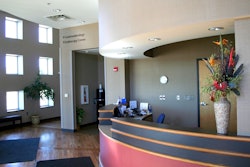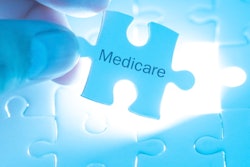
Distributing CT and MRI services between sites for Medicare patients could improve reimbursement for the same services delivered, according to research published August 28 in Current Problems in Diagnostic Radiology.
A team led by Brian Triana, MD, from Duke University Medical Center in Durham, NC, found that by allocating imaging studies between paired hospital outpatient departments (HOPD) and free-standing office (FSO) sites, reimbursement margins improved by 8% for CT and 3.5% for MRI, respectively.
"This work contributes to an understanding of financial incentives of existing Medicare reimbursement policy and may guide future policy design toward high-value care," Triana and co-authors wrote.
Declining reimbursement and rising costs are a concern among healthcare professionals, including radiologists, in the U.S. healthcare system, with many questioning the financial sustainability of it all.
Previous research suggests that shifting overall imaging volume toward outpatient department sites could help with variable Centers for Medicare and Medicaid (CMS) reimbursement and denial rates. However, the Triana team pointed out a lack of data on the financial drivers and effects of these allocation decisions.
The researchers sought to qualify the monetary impact of strategic allocation of imaging exams between multiple sites of service within a large healthcare system. Using the 2022 CMS Medicare Physician Fee Schedule (MPFS), they culled current procedural terminology (CPT) codes and Medicare charge rates for common cross-sectional CT and MR imaging exams. The team also calculated total Medicare reimbursement rates for each imaging exam based on CPT codes at hospital outpatient departments and free-standing office sites. These included professional and technical fees.
From there, Triana and colleagues created baseline and optimized simulations for imaging exams distributed between sites of services to estimate the maximum monetary impact of targeted distribution.
They found expected financial gains for paired scanners for both modalities at each site. For CT, the estimated annual average reimbursement for combined HOPD and FSO on baseline simulation was $3.3 million. After optimized reallocation was used for studies between the sites of service, reimbursement increased to $3.5 million. This resulted in an expected gain of $260,162 for a set of paired outpatient department and free-standing office scanners.
For MRI, the same approach resulted in a baseline reimbursement of $2.5 million. This increased to $2.6 million after services between sites for an expected gain of $87,532.
The team also reported that there were 28 CT and 19 MRI daily patient imaging appointments at each respective outpatient department and free-standing office scanners, which were unchanged between baseline and optimized cases.
Finally, the group reported that denial rates for imaging exams ranged from 3.7% for abdominal/pelvic CT with contrast at outpatient department sites to 12.5% for thoracic spinal MRI at free-standing hospital sites. Additionally, expected financial losses for each imaging exam due to denial of payment ranged from $6.48 (5.9% of total reimbursement) for CT chest without contrast to $23.87 (7.9% of total reimbursement) for CT angiography head imaging. For MRI, expected losses ranged from $9.99 (6.4% of total reimbursement) for cervical spine imaging without contrast to $55.78 (12.5% of total reimbursement) for thoracic spinal imaging with and without contrast.
While the study's results showed potential financial incentives for distributing specific imaging exams at different sites, the authors cautioned that financial performance should not be the sole factor in such distribution of services.
"The most appropriate site of imaging should require physician input with an assessment of patient safety and clinical appropriateness," they wrote. "Furthermore, patient preferences and patient access should be additional inputs for determining the optimal site of service."
The full report can be found here.





















